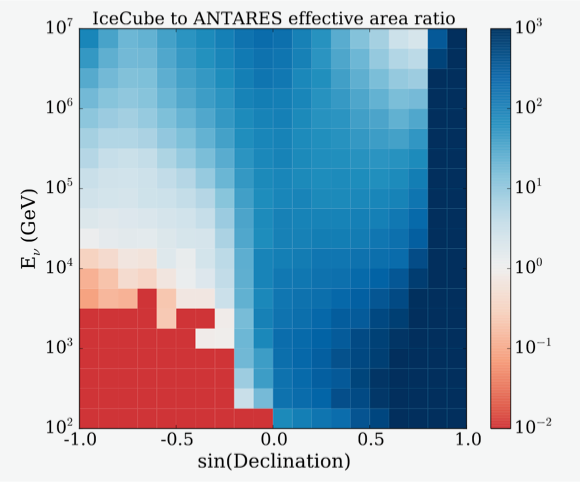Maybe, but not many, according to IceCube.
Although fast radio bursts’ (FRBs) progenitors are supposed to be compact and perhaps catastrophic cosmic events that may also produce neutrinos, IceCube has not detected any such neutrinos that could be associated with a known FRB in six years of data. These results are far from precluding the eventual detection of neutrinos from FRBs in the future, but they have set the best limits yet on how many are emitted. The results have been submitted today to ”The Astrophysical Journal”.

A fast radio burst consists of bright radio emission, usually only a few milliseconds long, that may be the result of the collision of a neutron star with a black hole or of another extreme astrophysical event. Discovered in 2007, they were initially thought to be produced by a cataclysmic event that would destroy its source. However, ten years after their discovery, at least one of the sources has produced repeated radio bursts over 100 times. According to Justin Vandenbroucke, an assistant professor of physics at UW–Madison and a corresponding author of this work, “fast radio bursts are a mysterious new class of astrophysical transients—we don’t know what’s producing them.”
Between May 2010 and May 2016, radio astronomers detected 29 FRBs across the whole sky from a total of 13 directions–17 of them were bursts from FRB 121101, the only source to date that has been found to repeat. IceCube’s gigantic size, a cubic kilometer of instrumented ice, provides omnidirectional detection capabilities that enable a continuous scan of both the northern and southern sky. In these six years of data, a few neutrinos were detected near the locations of some FRBs, but scientists have shown that their arrival times and overall distribution can be explained with background neutrino emission from other sources.
“This is only the beginning of a long quest,” says Donglian Xu, a postdoctoral researcher at UW–Madison and also a corresponding author of this paper.
FRBs are one of the hottest topics in astrophysics. In the near future, brand new radio observatories may discover over a thousand FRBs every year. And that’s why scientists around the world are honing their analysis skills to use signals from multiple messengers to learn about the origins of these fast, whether one-time or intermittent, radio bursts.
In IceCube, this search for neutrino emission from FRBs used data samples optimized for searches of neutrinos from gamma-ray bursts (GRBs) with energies between 0.1 TeV and several PeV. IceCube scientists are already working on a more sensitive selection that will include all neutrino flavors and lower the energy threshold. Samuel Fahey, a graduate student at UW–Madison, is one of those scientists. “We’re working on using every tool at IceCube’s disposal—this analysis was just one piece of the puzzle.”
Very little is known about the sources of FRBs. Their distribution across the sky, as well as indirect evidence of their distance, suggests an extragalactic origin. Yet only one FRB is proven to be extragalactic. Galactic neutron stars or other sources might also produce radio bursts. If this happens, IceCube might detect a sudden increase in the background Cherenkov light due to MeV-scale neutrinos.

The most powerful searches can benefit from the collaboration of two telescopes, as is often the case in neutrino astronomy. ANTARES, a smaller neutrino telescope in the Mediterranean Sea, has better sensitivity in the Southern Hemisphere for energies below 50 TeV. In a joint search for FRBs, IceCube and ANTARES could provide the best sensitivity across the full sky.
The good news is that, one way or another, neutrinos are ready to roll in the quest for FRBs.
”+” info “A search for neutrino emission from fast radio bursts with six years of IceCube data,” The IceCube Collaboration: M. G. Aartsen et al. The Astrophysical Journal 857 (2018) 117, arxiv.org/abs/1712.06277, iopscience.iop.org
